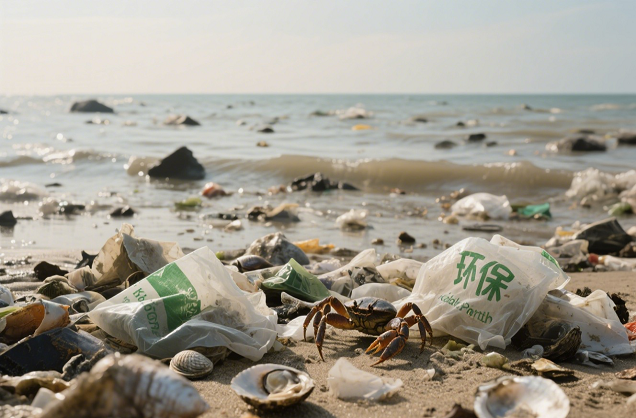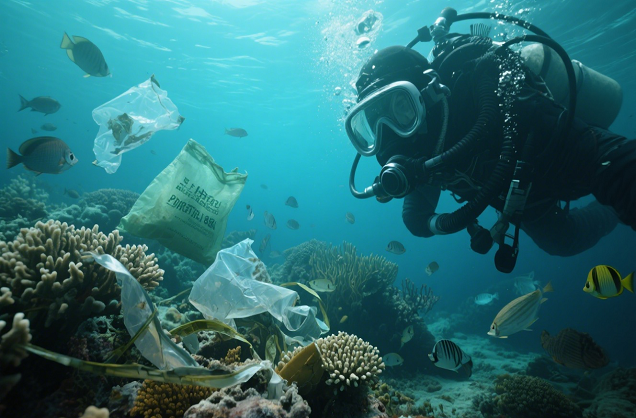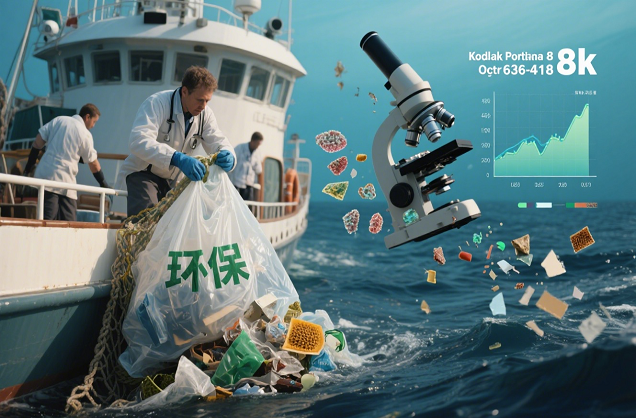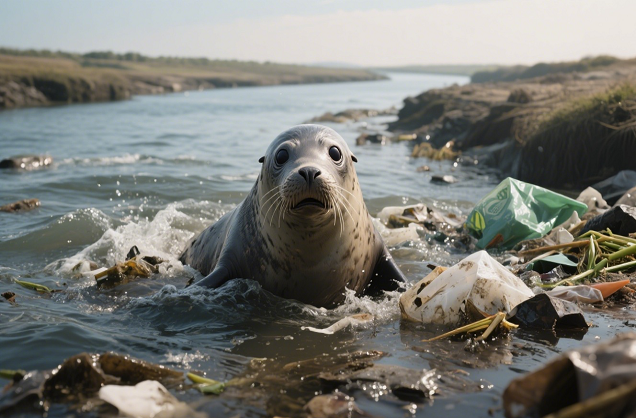The “eco-friendly” plastic bags you buy could be poisoning the oceans.
The Ocean Crisis Under the Eco-Label
Plastic bags labeled as “biodegradable” or “eco-friendly” have become increasingly common in recent years, and many consumers are willing to pay a higher price for them in the belief that they are doing their part to help the environment. However, according to a recent report by the United Nations Environment Program (UNEP) in 2024, more than 65% of the world’s “eco-friendly” plastic bags do not actually degrade in the oceans, and produce even more microplastic pollution than traditional plastics.

Part I: 3 types of “pseudo-environmental” plastic bags that are poisoning the oceans
1. Oxo-degradable
? Problem:
made from traditional PE plastic + degradation additives
breaks up into micro-plastics only and cannot be broken down by micro-organisms
banned by the EU, Canada and more than 40 other countries
? Experimental data:
Time Status Micro-plastic release 0 months Change Microplastic release
0 months Complete bag 0 mg
6 months Cracks on surface 120 mg/m²
12 months Fragmentation into <5mm pieces 580 mg/m²
2. Industrial compostable PLA
? Problems:
Requires 58-60°C industrial composting environment to decompose
Almost non-degradable in room temperature seawater
Causes intestinal blockage when accidentally ingested by marine organisms
? Real-life examples:
Large amounts of “compostable” PLA tableware residues were found on the coast of Hawaii in 2023, testing showed:
After 18 months of seawater immersion, the weight had decreased by only 3%. After 18 months of seawater soaking, only 3% weight loss
PLA microplastics detected in the stomachs of young albatrosses
3. Starch-mixed plastics
? Problems:
Usually contains 30-70% of conventional plastics (PP/PE)
Plastic skeleton remains after starch has partially degraded
More prone to form “porous microplastics” that can attract toxic substances
? Microscopic observation:
Honeycomb plastic structure left after starch has degraded Structure
Adsorbs 2 times more pesticides and heavy metals than ordinary microplastics.

Part 2: Laboratory tests – which materials are truly ocean-friendly?
Experimental methodology:
Five material samples were placed in artificial seawater at 25°C and tested periodically:
Weight loss rate
Microplastic release
Degree of microbial decomposition
12-month results:
Material type Weight loss Microplastic production Ecotoxicity
Conventional PE plastics 0% Very high Severe
Oxo-degradable plastics 5% Very high Severe
Industrial PLA 3% Medium Medium Medium
Starch-blended plastics 15% High High
PHA 92% 0 None

Part III: 4 Steps to Identify Real and Fake Eco Bags
1. Look at the certification mark
✅ Real Marine Degradable:
TÜV Marine Degradable Certification (Marine Degradable)
OK Biodegradable MARINE
❌ False Mark:
“Degradable” (no specific standard)
“Oxo-biodegradable” (banned in EU)
2. Check the ingredient list
Safe ingredients: PHA, PHBV
Dangerous ingredients: PE, PP, “Oxo-biodegradable”
3. Do a simple test
① Cut a small strip and put it in warm water (25-30°C)
② Add a spoonful of active composting bacteria (simulating marine microorganisms)
③ True PHA: softens and crumbles in 2 weeks
④ False degradation: no change in 1 month
4. Choose a trustworthy brand
Brands that meet the standards of the real test in 2024:
Danimer Scientific (PHA fishing nets)
RWDC Industries (PHA straws)
TIPA (marine degradable packaging film)

Part IV: What can we do for the ocean?
Consumer Action:
Refuse to buy “eco-bags” without specific certification
Use canvas bags or real PHA products
Collect pseudo-biodegradable plastics separately when participating in beach cleanups
Corporate Responsibility:
Stop using oxo-biodegradable plastics
Clearly label products with degradation conditions and times
Invest in real ocean-friendly materials such as PHA
Policy Recommendations:
Harmonize ocean degradation certification standards globally
Impose a 10% penalty on sales for false environmental claims Policy Recommendation: Harmonize marine degradation certification standards globally
If you have any questions you want to know, please feel free to come and consult, and we will be eager to answer them for you.
Contact us now
Fill out the form below
We will contact you immediately.

Summarize your business so the visitor can learn about your offerings from any page on your website.
About
Contact
- Add: Room 4006, No.1 Helong Yiheng Road, Baiyun District, Guangzhou City
- Tel: +8613450255948
- Wechat : +86-13450255948
- Fax: +86-13450255948
- E-mail: 13450255948@163.com
